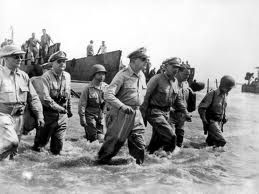 Rape Victims during the Japanese-American War in the Philippines, 1941-1945
Rape Victims during the Japanese-American War in the Philippines, 1941-1945 The first article in this series is my childhood war time experiences in the island of Panay, and the second article is my wife's childhood recollection of the war in the provincial town of Boac, Marinduque, Philippines. This third article is my cousin's story and memories of the war. She was 17 years old at that time. Her story was not directly communicated to me, but told to me by my mother.
In the summer of 1943, the Japanese had occupied the small town where my cousin resided with her adopted parents. My cousin, let us call her Linda (not her real name) was an abandoned child. Her mother was a native Filipina but her Dad was a Caucasian American. She was a beautiful teenager because of her mixed ancestry. Unlike the typical Filipina teenager, Linda was fair skinned in complexion, which she inherited from her father. She was abandoned by her Dad when she was only 4 years old. Her poor mother was not able to financially support her, so she was given for adoption to the older sister of her mother. Linda's aunt and uncle were farmers and lived in the barrio about 10 km from the main town of Barotac Viejo, Iloilo.
When the Japanese invaders occupied the town of Barotac Viejo, Linda's adopted family did not leave their farm. Once a week the family would walked to the market in town to buy their food supplies as well as sell some of their farm products (fresh vegetables, fruits, and hens' eggs).
One day, a platoon of Japanese soldiers saw Linda. They admired her beauty, snatched her from her parents and she disappeared for over an hour. Linda's parents were delirious with anxiety but were helpless and scared for Linda's life. About two hours later Linda joined her parents at the town market. She was in tears and told her parents that four Japanese soldiers had raped and assaulted her. She was told that if she were to tell anyone what happened, they would kill her and also her family.
This incident was kept secret by the family because of fear of retribution from the Japanese. But rumors in the area spread that the Japanese soldiers had started to rape young girls, and sometimes even older women. With these rumors circulating around, most of the young women in town would disguise themselves as older women in public so the Japanese soldiers would not be tempted to rape them. Other families forbade their daughters to leave the house and hid them in the barn or the outside buildings when they heard that the Japanese soldiers were coming to their village.
Meanwhile, in a related event in the next town, a few of the Japanese soldiers had cohabited with the local women. My mother had a distant relative who was a rich widow in this town. Words had circulated that this widow had been seen entertaining a Japanese officer in her home. The widow had five children, four girls and one boy. In this town there were numerous natives who were friendly and cooperated with the Japanese. They were called collaborators. Some acted as spies or as double agents (giving information to both the Japanese and the local guerrilla resistance forces hiding in the mountains).
The next year (1944), my mother's distant relative gave birth to another girl. The baby looked more Japanese than Filipino. She did not hide this fact and she gave her youngest daughter the same love and attention as her older siblings. The Japanese officer was very kind to the family, giving them gifts and extra food.
By the end of the war, her child was almost a year old when the Japanese were defeated and surrendered to the Filipino-American forces that liberated the island. Today, this girl is now a grandmother and still feels very insecure regarding her looks. She looks very Japanese and has no physical resemblance to her other four sisters.
By pure coincidence, I met this lady a couple of years ago during a Filipino-American party in Southern California. She married a Japanese-American citizen who was in the Japanese-American interment camp during the war when he was a boy. They have three children and two beautiful grandchildren residing in the Los Angeles area.
Meanwhile, Linda grew up to be a very beautiful woman. She got married to a local man and raised six children. Five years ago she died, at the young age of 71. I never spoke to Linda personally, but I saw her one day visiting my mother. Her physical appearance and demeanor did not show that she was at one time a rape victim of the Japanese invaders.


